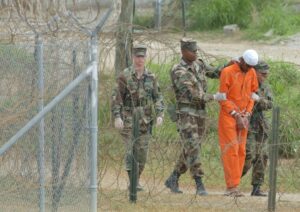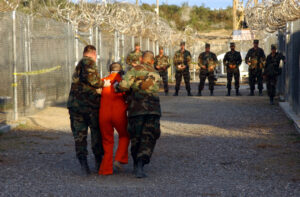America’s ‘Strong Commitment to Error’
John Kenneth Galbraith once warned that U.S. foreign policy suffers from institutional rigidity with a "strong commitment to error." What better proof than the planned surge in Afghanistan?John Kenneth Galbraith, the distinguished and irreverent Canadian-born but U.S.-nationalized economist, observer of American national mores, preconceptions and faults, and a sometime U.S. government official, wrote the following of his government experience in Washington and New Delhi in the 1960s.
He was not the only one, he said, who fell afoul “of a major feature of our foreign policy. That is its institutional rigidity, which holds it on course even when it is visibly wrong. So it was on Vietnam, as is now accepted. So it was on … military alliances with the poor lands. … So it was [and continues to be] on such matters as the enlargement of NATO or the continuing trade and travel sanctions on Cuba, or, as this is written [in 1999], on a sensible response to the more liberal tendencies now evident in Iran. … [It is] a rigidity with its strong commitment to error.”
Indeed, a decade later, one might be justified in speaking of an absolute, inevitable and chronic institutional commitment to error.
From in the 1920s to the mid-1930s, the principal postulated enemy in U.S. naval war planning and exercises continued to be the British Royal Navy, as had been the case for more than a century of American history.
The U.S. Navy today operates 11 large aircraft-carrier battle groups, which are, as William S. Lind has written, “still structured to fight the Imperial Japanese Navy,” although the only currently available wars at the moment are those with non-state insurgent forces in the desert of Iraq and the mountains of Afghanistan.
The U.S. Air Force today is bitterly divided between partisans of buying still more than it already has of the supersonic stealth F-22 fighter, which was designed to counter a Soviet interceptor that was never built (there ceased to be a Soviet Union), and partisans of the Air Force instead turning to the F-35 “Joint Strike Fighter.”
The F-35 is even more costly than the F-22, and according to one Air Force critic quoted by Chalmers Johnson, “has a distinction that even the F-22 cannot claim, namely that it is tailored to meet [a Soviet] threat that ceased to exist at least three years before [the F-35’s research and development] program began.”
The aircraft was promised to Congress in 1998 at a unit cost of $184 million. Its scheduled cost in 2008 is $355 million a unit, and its development is two years behind schedule.
Its original cost projections also assumed that it would be sold and partially paid for by an array of NATO allies led by Britain, Norway and the Netherlands (none of which would receive a version that could be operated independently of U.S. Air Force personnel) — a demonstration that NATO Europe is not acquainted with the 19th century American showman P.T. Barnum’s maxim that “there’s a sucker born every minute.” However, these foreign sales are not yet totally nailed down, so Barnum’s wisdom might prevail at Washington’s expense instead.
This digression into military procurement is relevant to Galbraith’s warning, since it provides a further demonstration of the institutional incapacity of the United States international policy establishment to change course, no matter how flagrant the need to do so, and this incapacity is perhaps the biggest of all the problems faced by President Barack Obama.
The new machinery of counterinsurgency, nation-building and democratization in radicalized, failing or “failed” states, so as to “win” the war on terrorism, was put into operation by the U.S. more than a year ago, at about the time Iraq tactics were changed to enlist Sunni tribesmen in the Awakening movement, and the ethnic segregation of Baghdad began to bring a significant (if impermanent?) drop in violence there.
Despite the evidence that the Afghanistan situation bears little resemblance to Iraq, a version of the “surge” is planned there, using the Obama-ordered reinforcement of existing U.S. troops by 30,000 soldiers. The plan seems to be to pacify Baghdad first. There have been calls for building a “Green Zone” in Kabul to house U.S., allied and foreign institutions, as well as the Afghan government.
Despite the deteriorating political and military situation in neighboring Pakistan and the political situation in Kabul, as well as current Taliban success in conquering much of the Afghan countryside, it seems that the plan now is to secure Kabul with the new forces, and to do there what was done (or left half-done) in Iraq. The institutional rigidity of U.S. foreign policy has been locked in place. The ideas — there are many — about negotiations, local, regional or multinational, seem ruled out. Here we go again.
Visit William Pfaff’s Web site at www.williampfaff.com.
© 2009 Tribune Media Services Inc.
Your support matters…Independent journalism is under threat and overshadowed by heavily funded mainstream media.
You can help level the playing field. Become a member.
Your tax-deductible contribution keeps us digging beneath the headlines to give you thought-provoking, investigative reporting and analysis that unearths what's really happening- without compromise.
Give today to support our courageous, independent journalists.






You need to be a supporter to comment.
There are currently no responses to this article.
Be the first to respond.